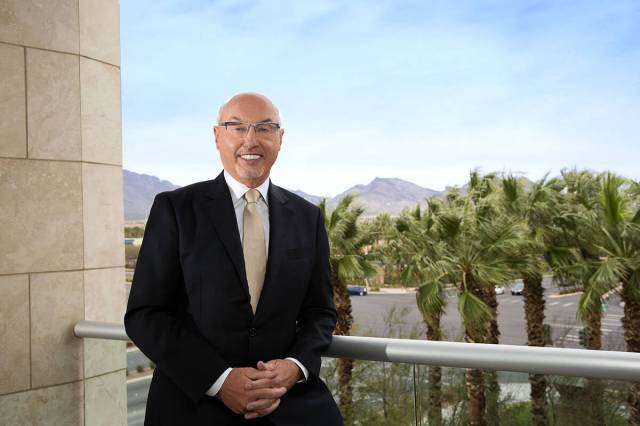
I am often asked why a home in Summerlin may cost a little more than a similar home outside of a master-planned community (MPC). The simple answer lies in the old adage: You get what you pay for.
For homebuyers, business owners and even investors, MPCs provide better long-term value. High design standards, coupled with strong homeowner associations that protect community aesthetics and uses tend to ensure homes in MPCs hold their value better and longer than homes outside an MPC.
A few examples? Four-sided architecture is required of homes in Summerlin to ensure they look good from every angle. A sense of intimacy and identity for each village or district is distinguished by unique wall architecture, landscaping, residential design criteria and entry monumentation. Signage restrictions in the community are, by design, the toughest in the valley to maintain Summerlin’s uncluttered and pristine image.
For residents, homes in MPCs are a package deal that includes access to abundant amenities all the places, opportunities and experiences that enhance quality of life. Those who seek MPC living understand they may pay a little more for their home and the requirement to contribute to the ongoing maintenance of parks, trails, streetscapes and other common areas through HOA fees and in some cases, special improvement districts.
Master plans: the ultimate investment protector
Summerlin ranked No. 3 nationally for the fourth consecutive year for new home sales in 2021, a remarkable achievement for a community now entering its 32nd year of development. While there are many reasons for Summerlin’s success, including its hallmark quality of life created by abundant amenities like parks, trails, top-ranked schools and its own downtown, perhaps nothing has been more influential in the community’s enduring success than its own master plan.
Although created more than three decades ago, the Summerlin master plan is as relevant today, as it was in the late 1980s. It was thoughtfully designed to ensure flexibility to allow for changing market preferences and economic conditions, while still charting a course that ensures quality development — despite the unpredictable twists and turns of time.
What is a master plan?
By definition, master plans are blueprints for community development. They allow for better relationships among uses; they factor in traffic flow; they incorporate access to amenities; they include land planning and design that is not only aesthetically pleasing, but also ensures walkability, connectedness and functionality.
Master plans earmark land for schools, shopping centers, business centers, houses of worship, parks and open areas. And master plans exemplify smart growth by balancing jobs and housing, organizing development around commercial areas — just as we are doing at Downtown Summerlin with new office buildings, and job opportunities at its abundant retail, sports and entertainment venues. And through a number of public-private partnerships, we are able to more quickly bring critical facilities and services to serve the community, including fire stations and most recently, the LVMPD Summerlin Area Command. As the developer, we often fund the design and construction of these facilities to expedite their completion.
Respect for the environment
Three years before the first piece of dirt was turned in Summerlin, the single most important act of preparation for the community was executed: a land exchange with the Bureau of Land Management facilitated by The Nature Conservancy in which The Howard Hughes Corp.gave up 5,000 acres of environmentally sensitive land in exchange for 3,000 acres more appropriate for development — establishing a boundary for Red Rock Canyon National Conservation Area that forever protects this treasured area of our valley.
Summerlin’s environmental legacy continued with a second land exchange and the incorporation of several land planning innovations including Nevada’s first roundabouts that facilitate safer traffic flow, ease congestion and reduce pollution by eliminating idling at traditional intersections. Natural drainage areas and arroyos, along with required storm water detention basins, have been preserved and often enhanced to serve dual use as parks and trails. And today, Summerlin continues its longtime focus on water conservation by eliminating non-functional turf throughout the community and installing water-smart irrigation systems.
The importance of social infrastructure
Development is primarily focused on physical infrastructure — roads, parks, trails and physical facilities. Yet in Summerlin, social infrastructure has also been a top priority from the beginning, as we endeavored to create community vitality through special events and activities that unite residents. The Summerlin Council, the nonprofit arm of the Summerlin Community Association, oversees a robust calendar of events, seasonal celebrations, youth and adult sports leagues and classes and experiences — exclusively for residents. And events like the Summerlin Festival of Arts, now in its 26th year, along with holiday parades and activations at Downtown Summerlin, are publicly accessible and enjoyed by all Southern Nevadans.
The bottom line is that master-planned communities, by their very nature, are good investments that make communities live as good as they look. After all, quality of life is everything.
The lesson learned? Today’s homebuyers should strongly consider purchasing in a master- planned community to protect their investment while enjoying a better quality of life.
Kevin T. Orrock is the president for Las Vegas Region, The Howard Hughes Corp.